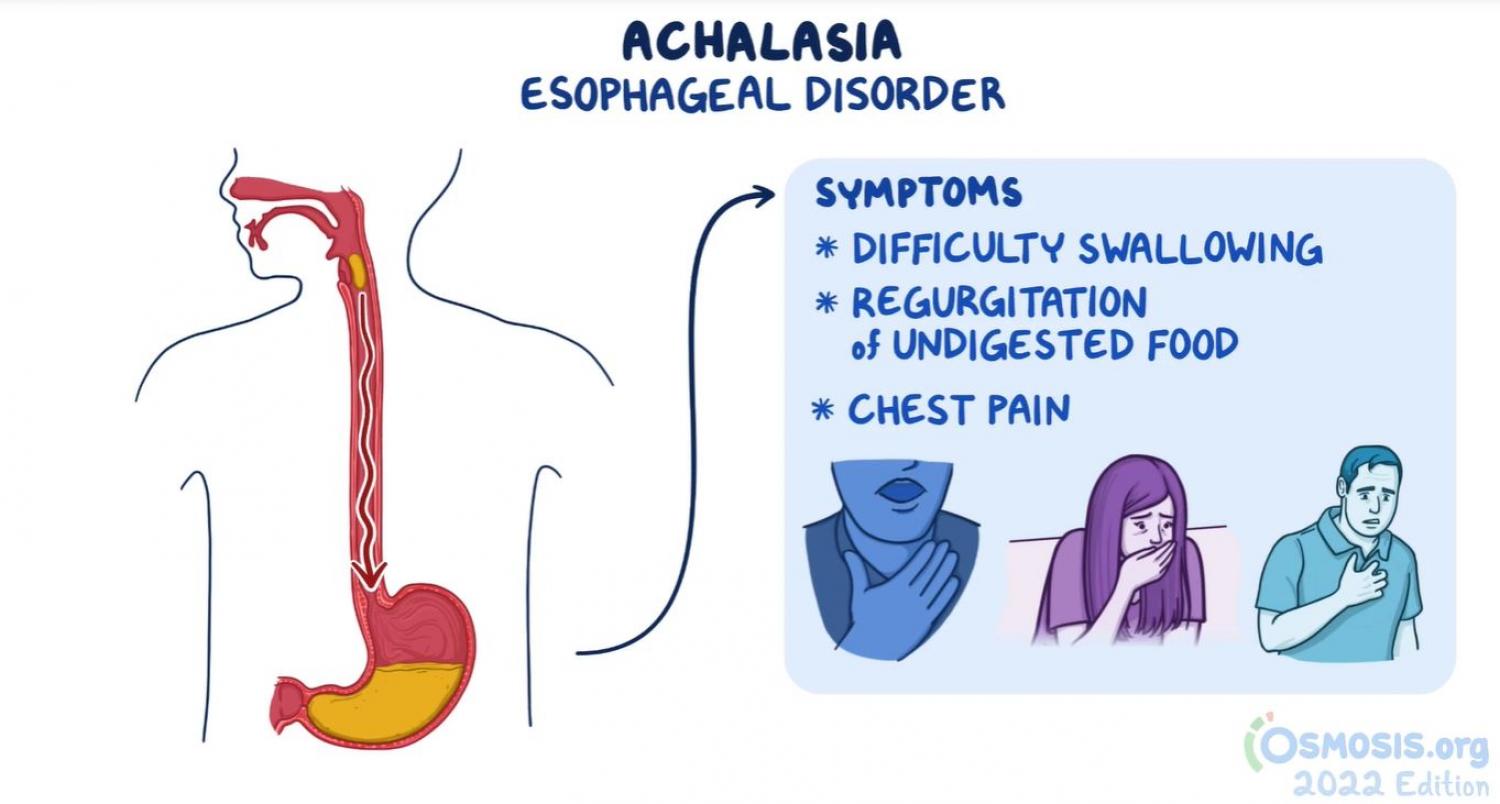
Rare Disease Education: Achalasia
Editor: Kelsey LaFayette, DNP, RN, FNP-C
"When you hear hoofbeats, think of horses, not zebras,” is a common saying in medical education that means you should think of common conditions first, instead of rare ones, in making a diagnosis. “Rare” is a relative term though and about 7,000 rare, or "zebra," conditions affect more than 350 million individuals worldwide. Although these conditions collectively affect an enormous number of people, each of these conditions individually is rare enough that it can be difficult to secure the resources to study them and to develop treatments and cures. Likewise, awareness of rare conditions may be low and health care professionals may not be familiar with their signs and symptoms making it more difficult to reach a correct diagnosis and provide effective treatments.
To increase knowledge about rare conditions, Osmosis and the National Organization for Rare Diseases (NORD) have collaborated on an initiative to bring education and awareness to the public. We are excited to be a part of this initiative because we believe everyone deserves quality health care, no matter how rare their condition.
Zebra Highlight: Achalasia
This week, we will highlight achalasia, a disease whose name comes from the Greek word ἀkhálasis meaning “without loosening,” and involves damage to the nerves in the esophagus causing the lower esophageal sphincter, a circular muscle at the end of the esophagus, to be unable to relax. Normally, every bite of your favorite food travels down your esophagus, through the lower esophageal sphincter, and into your stomach. With achalasia, the lower esophageal sphincter is unable to relax to allow food to pass, resulting in food lodging in the esophagus. Common early symptoms include difficulty swallowing and chest pain. Achalasia is treated with myotomy, a surgical procedure where the sphincter muscle is cut to allow it to relax for food to pass.
Meet Chris
Click here to watch video Unable to Swallow -- A Patient's Story of Years Living with Achalasia
Chris has achalasia. For a time, he couldn’t eat in public or conduct business lunches because of difficulty swallowing. It took Chris five years to be properly diagnosed, a delay that people affected by Zebra diseases know all too well. Watch him tell his story.
Organizations Taking Strides
Nancy Lazarus had enough. For eight long years, she felt her symptoms went unheard by doctor after doctor. When Nancy was finally diagnosed with achalasia, she didn’t want anyone to go through the same ordeal. This led to the founding of the Achalasia Awareness Organization, whose primary mission is to raise awareness about this potentially debilitating disease.
Click here to watch the educational Osmosis video on Achalasia
More Information on Achalasia:
